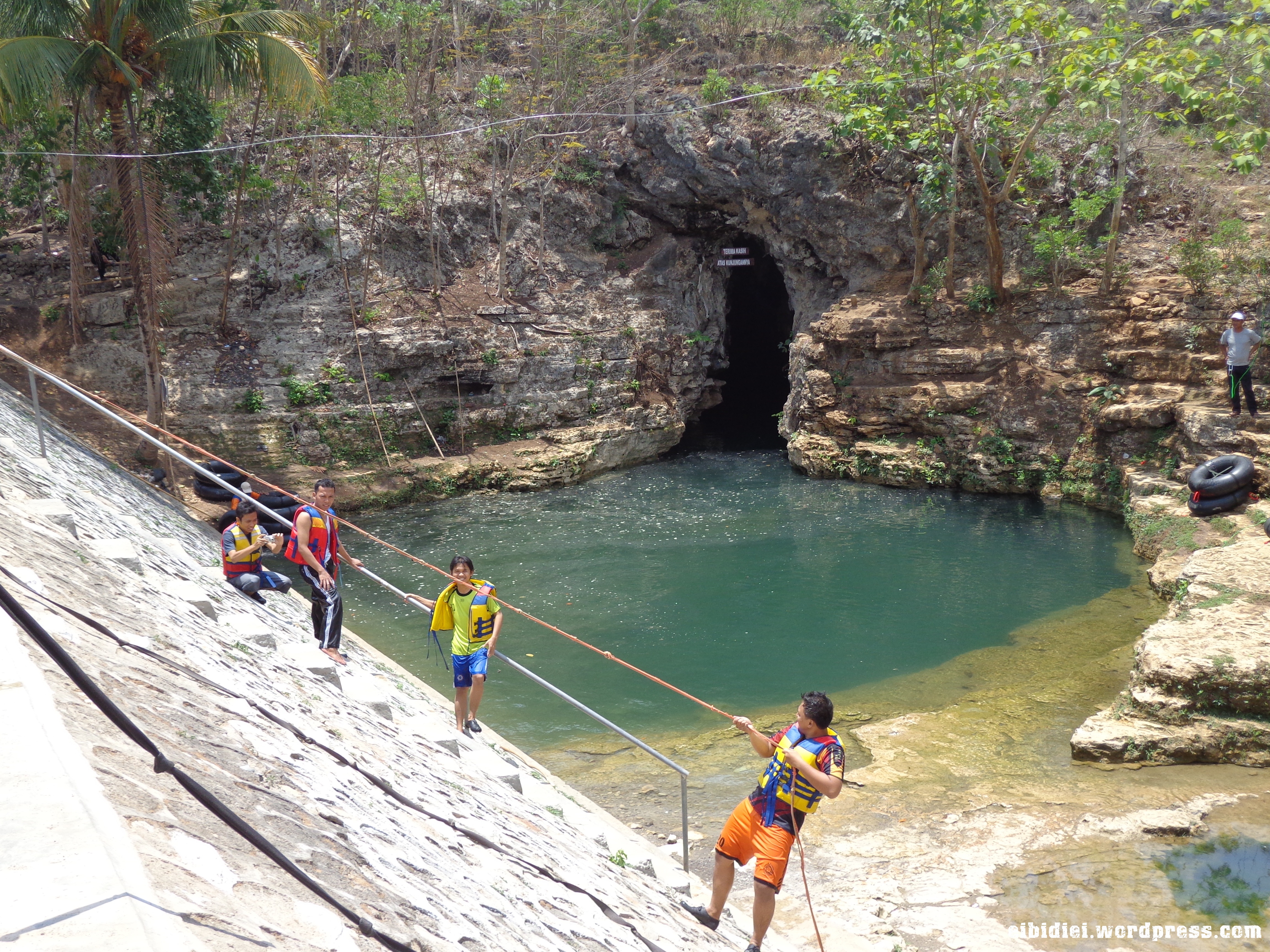Upon seeing the ruins of Taman Sari, some cultural experts say that it has multi purposed functions, such as:
1. A Rest house, in the form of water castle with beautiful park. The air is fresh due to:
Artificial lakes and canals
Bathing pools
Large gardens with several kind of varieties of trees
2. A place for sport and entertainment
Boating and swimming
Deer hunting
Classical dance Bedoyo and Srimpi
Gamelan music
3. A place for meditation
4. An important palace and shelter for the Sultan. It was well protected. It had 2 Bastions
with 12 and 6 Cannons.
The Castle itself divided into two (2) complexes. They are:
1. Umbul Binangun - swimming pool complex
It is the swimming pool where only the Sultans women can frolic. In this complex only woman employees serve the Sultan. Theres also a three story tower, with Sultan private bedroom stands south of the swimming pool and The Sultans private bath-pool is behind the tower. Somewhere in the south part of the palace, there is a special place, believed to be Sultans meeting place, from time to time with the Goddess of the South Sea, Kanjeng Ratu Kidul.
2. Pulo Kenongo - Complex
Pulo Kenongo, the Palace of Kenongo Island was found in the middle of Segaran Taman Sari. (Taman Sari artificial lake, which was connected by water canal to the other artificial lake nearby the kraton) Kenongo is a name of flower trees planted in the front yard, where the fragrance spread out in the palace. Just like in a palace, there were living rooms, bedrooms, rooms to make Batik, a hall to perform classical sacred dance of Bedoyo and Srimpi, gates and sentry-boxes guarded strongly by the palace soldiers.
To Stay
Tourist who wants to stay in the heart of the city has many choices since there are a lot of star and non-star hotels available.
To Buy
Pasar Ngasem - Bird Market, here is a market place which sells several kinds of cute birds and pets. Traditional products and household earthenwares are also sold here. In this area Batik Painters do not only sell their products, but some also give instruction in this art. Art shops and galleries of medium quality can be found allong the alleys.
Pasar Ngasem - Bird Market, here is a market place which sells several kinds of cute birds and pets. Traditional products and household earthenwares are also sold here. In this area Batik Painters do not only sell their products, but some also give instruction in this art. Art shops and galleries of medium quality can be found allong the alleys.
To Eat
There are many local 'warungs' (food stalls) that serve local foods. You can try one of the famous Yogyakarta local dish calledGudeg, a curry of jackfruit, chicken and egg served with rice.
There are many local 'warungs' (food stalls) that serve local foods. You can try one of the famous Yogyakarta local dish calledGudeg, a curry of jackfruit, chicken and egg served with rice.







 Timang Beach is located in anggolo, Purwodadi, Tepus, Gunung kidul, Yogyakarta. Same locatin with
Timang Beach is located in anggolo, Purwodadi, Tepus, Gunung kidul, Yogyakarta. Same locatin with 






